Bascom Cleft Lift
Bascom Cleft Lift
The Cleft Lift method (also known as Bascom II after its inventor) is a method that fulfills the medical goals of treatment to the largest extent, and additionally leaves a good esthetic effect. Directly after the surgery, the patient can get up and get dressed on their own, may sit down and walk. There is no reason for the patient to stay at the Clinic for longer; immediately after the procedure and after receiving further guidelines, the patient may leave the Clinic and return home. Additionally, the Cleft Lift method can be used practically at any stage of the condition, from mild lesions in the subcutaneous tissue to the vast and open wounds and deformations with scars after previous failed surgeries. The modification of this method by Dr. Immerman allows for successful closure of wounds to the very edge of the rectum.
Qualification for surgery
During the qualification visit, Dr. Norbert Zapotoczny assesses the lesion and establishes the final diagnosis based on the patient’s symptoms and the ultrasound. Then he discusses possible treatment methods with the patient. Each of the methods has its advantages and disadvantages, which is why discussing all the pros and cons with the patients is so important, since everyone may have different expectations and priorities regarding the treatment effects.
Over 500 Pilonidal Cyst Patients Treated Worldwide
Course of the procedure
After preparing the surgical field and administering anesthesia, the surgeon removes a small skin flap from one side of the intergluteal cleft together with the pilonidal cyst, avoiding opening the cyst, if possible. Skin removal is a necessary step to shallow the cleft; as a result, it is possible to remove excess skin that would otherwise remain after cleft shallowing. The skin flap is relatively thin – about 5–10 mm in thickness. The pilonidal cyst as well as all skin damages in the form of wounds, fistulas, and open pores are removed together with the flap. Then, the skin margin is dissected on the opposite side of the cleft and taken out of the deep cleft to be put at the top of the wound after closing the subcutaneous tissue. The relocated skin fragment covers the cavity left after the removal of the skin flap. The subcutaneous tissue and skin are closed with soluble sutures that are invisible from the outside. They do not need to be removed in the postsurgical period. The wound is tightly closed with a continuous intradermal suture and a drain is placed outside – a long silicone tube attached to a vacuum bottle. The purpose of this type of drainage system is to continuously aspirate the fluid that can accumulate under the relocated skin flap in the early stages of recovery. The handling of the drain and its later removal are easy and do not require any specialist knowledge or medical assistance – everyone can do it at home. Steri-Strips (adhesive bandages) are placed directly onto the wound and then a dressing is applied over them.
Directly after the surgery, the patient can get up and get dressed on their own, may sit down and walk. There is no reason for the patient to stay at the Clinic for longer, immediately after the procedure and after receiving further guidelines, the patient may leave the Clinic and return home, even if they need to remain in a seated position for several hours. After several hours, when the anesthesia stops working, discomfort and pain may be felt while seating and making sudden movements, which usually resolve after 2–3 days and rarely require strong pain medications. The discomfort while seating may last a little longer and is associated with the drain tube guided outside the wound. The drainage is kept until the daily volume of fluid in the bottle drops below 20 mL, which usually happens between the 5th and 7th day.
Trusted Worldwide
Lakenya
Ireland
The highest praise for top class medical and surgical care from Dr Zapotoczny and his amazing team.
I am from Ireland and I was in a seriously bad situation, I was having infections every 2-3 weeks and antibiotics were not working. The pain was entirely unbearable and after a failed drain and pack surgery in Ireland that took me over 6 months to even slightly recover from, I knew I could not go through that operation again with such a low success rate.
I found Dr Zapotoczny’s clinic from researching on Google and it was the best decision I ever made in my life to go as soon as I possibly could. I travelled over to him with an active infected abcess, I was alone and in a lot of pain and had huge anxiety as I had never been to Poland before and I did not speak the language.
He was able to help me as soon as he saw me. As soon as I entered the clinic I felt safe and every single member of staff was so kind. My lack of Polish was never once an issue and I had the best medical care I have ever experienced.
The nurse present during my surgery was an angel who kept me not only calm but even managed to make me laugh. I can never thank any of you enough. The aftercare I received was once again world class. Even though I was alone in Poland I never once actually felt alone because I knew I had contact with Dr Zapotoczny and the clinic who showed such care, empathy and skill from the moment they met me. Every question answered with a logical answer in a way I could understand.
The clinic itself is beautiful, has impeccable hygiene and a relaxing and calm atmosphere. The recovery from surgery was great. I knew that like all surgery, there would be some pain and swelling but this pain was nothing compared to the constant pain I lived in before the cleft lift procedure which in turn made it very manageable for me.
It’s been about 4 months since my surgery. No infections, no pain other than some expected nerve pain here and there during the healing process. I can exercise, I can live a life again. I am not in constant fear of infections and antibiotics.
If you are struggling with this condition, I cannot recommend going here highly enough. You will be taken care of and whilst not everything in medicine is predictable I truly believe this is a team of experts who are looking out for the patient and striving for giving the patient the highest quality of life possible.
Before and after pilonidal disease treatment

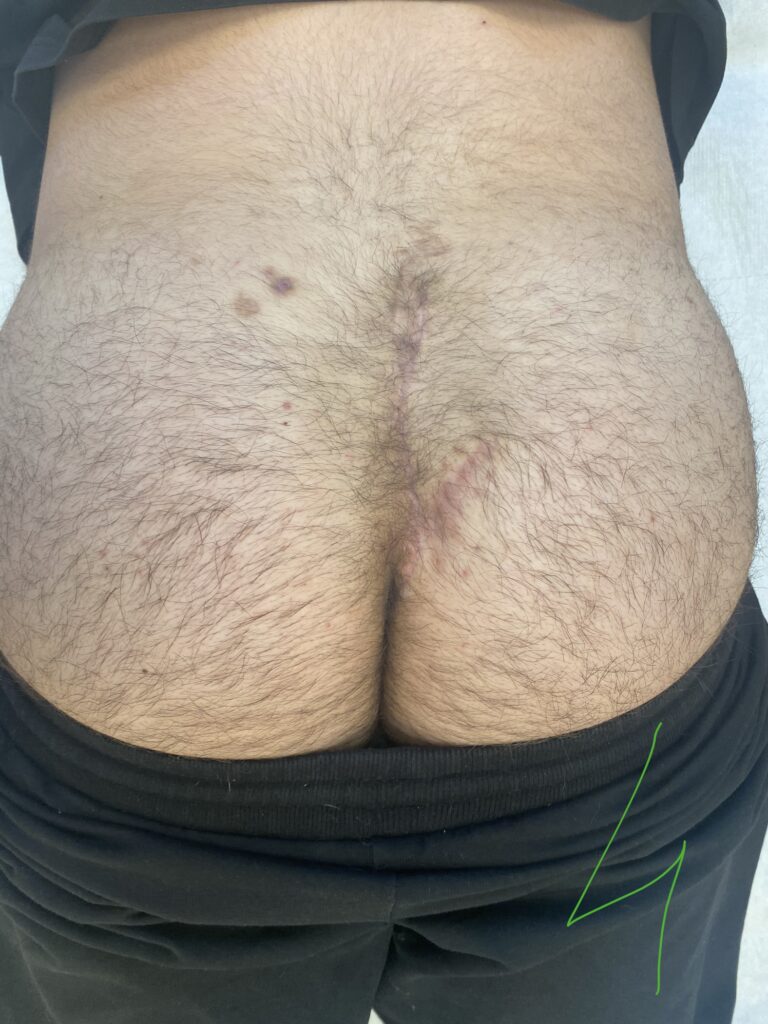

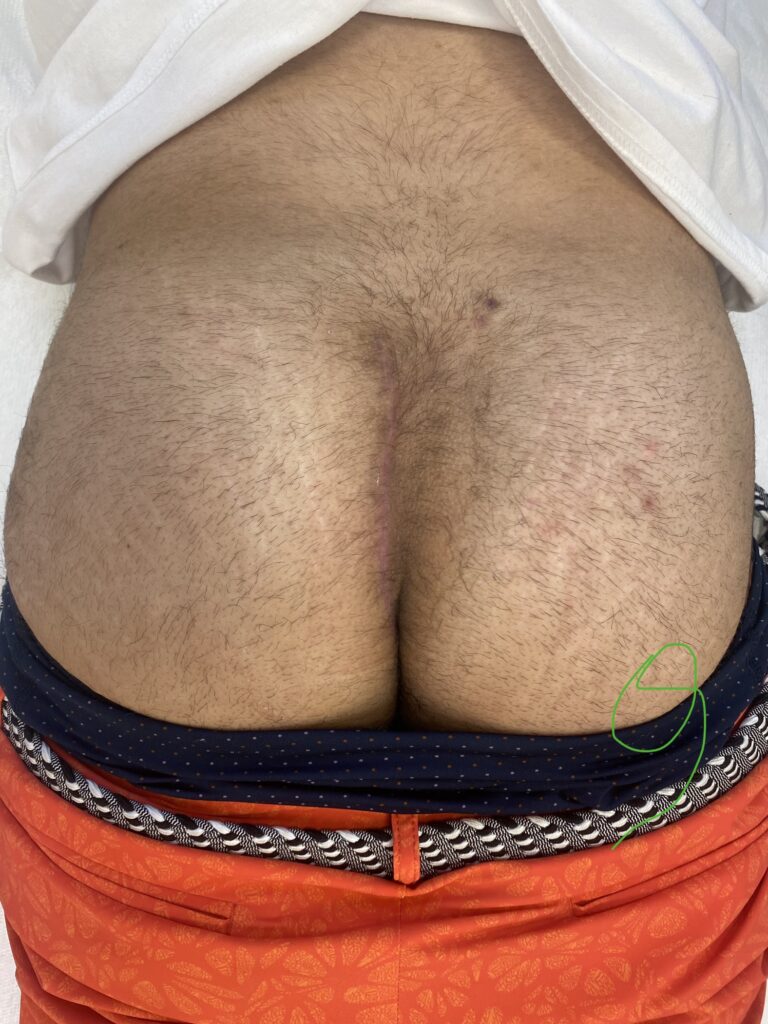

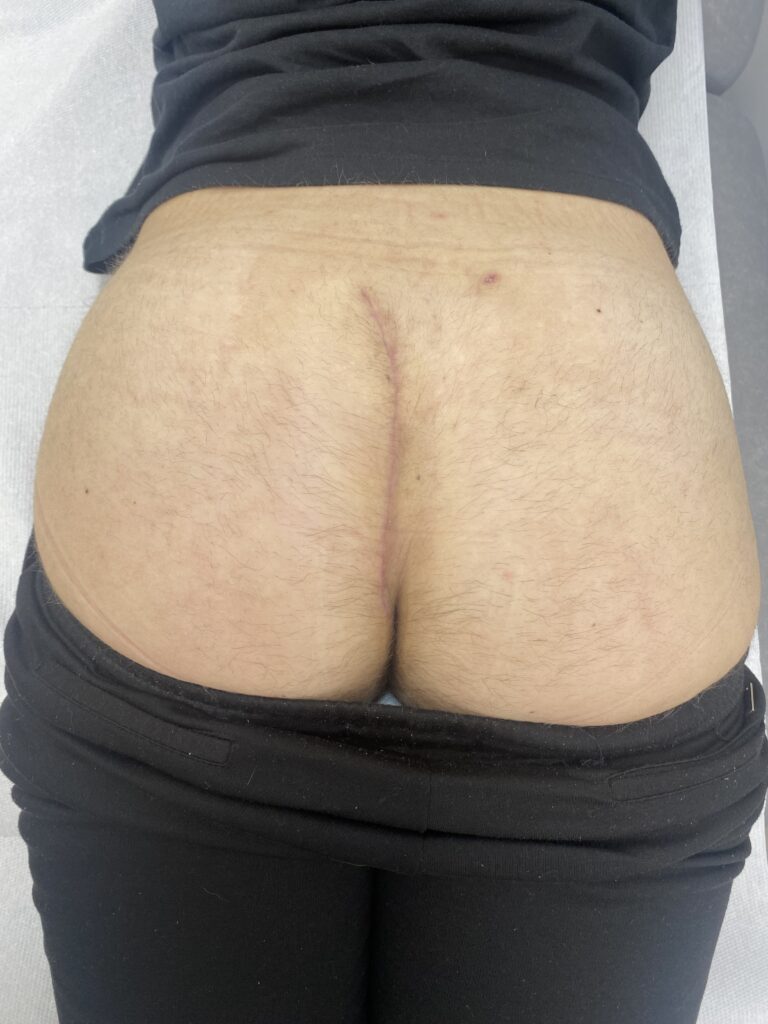


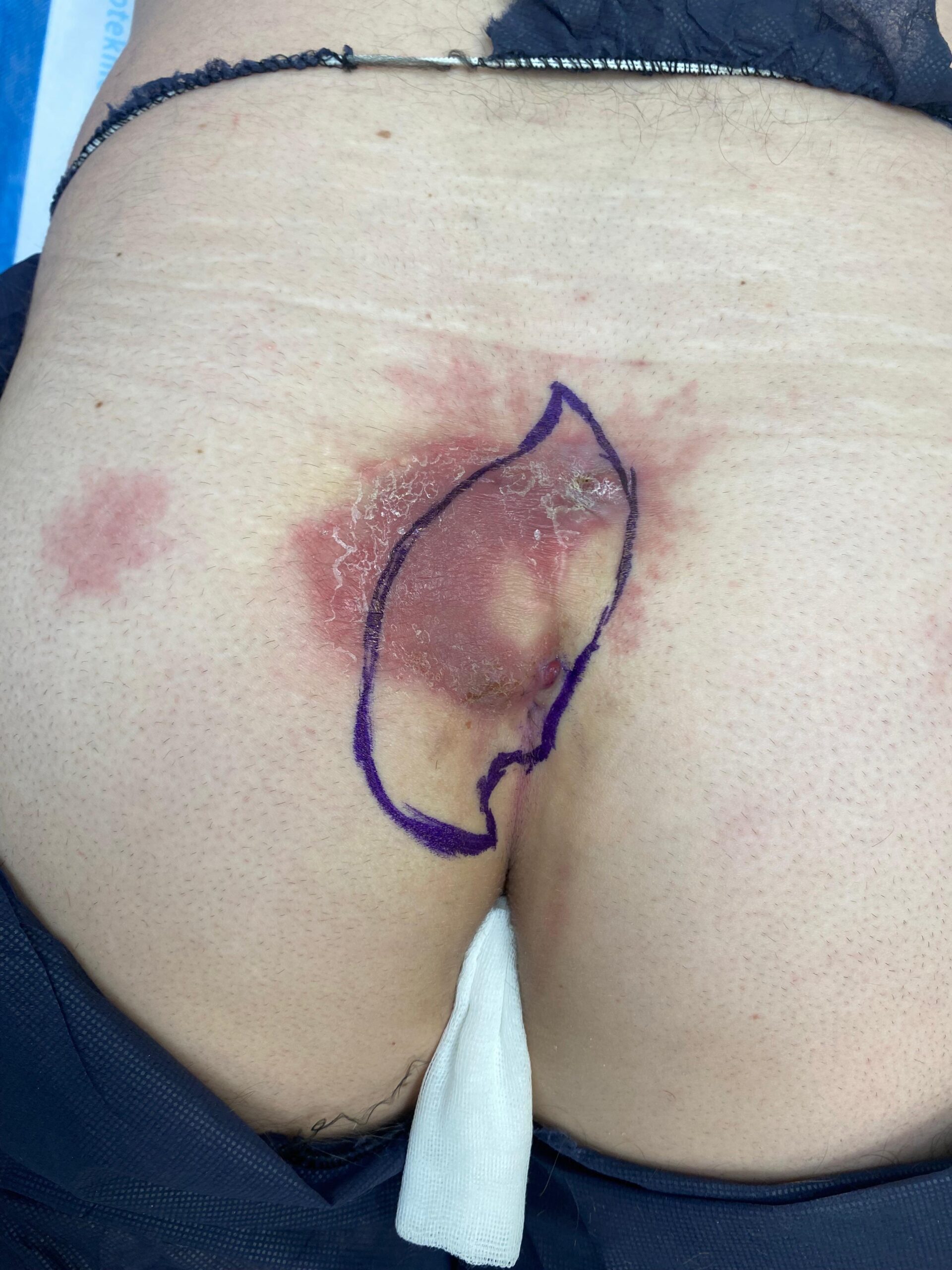
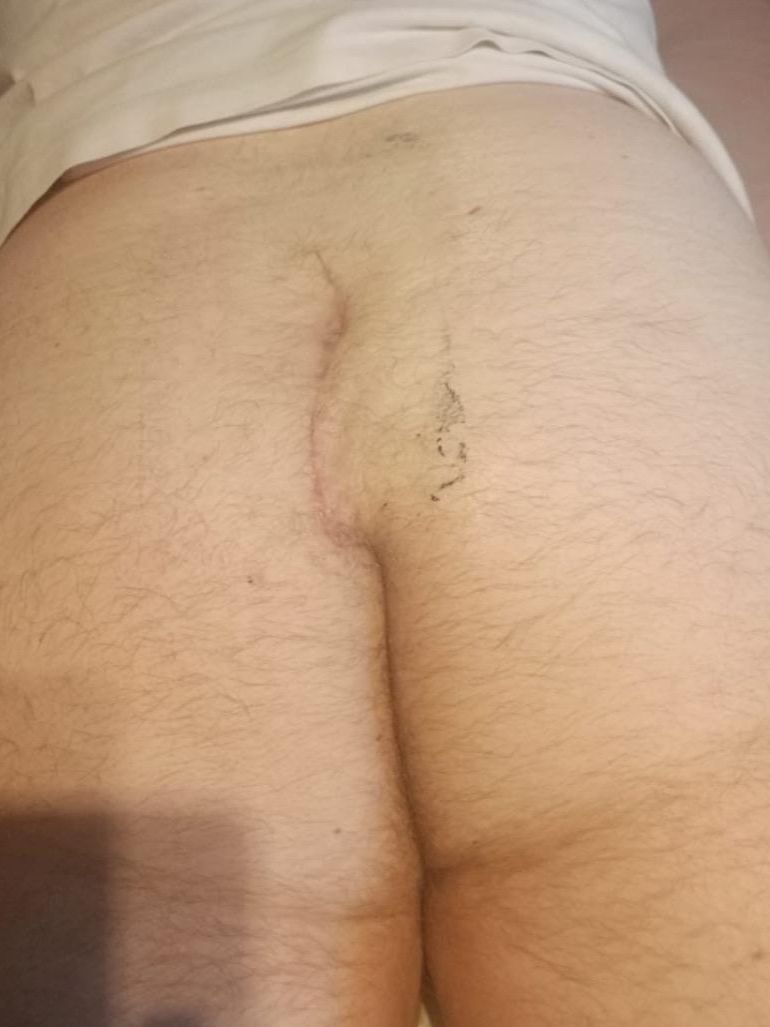
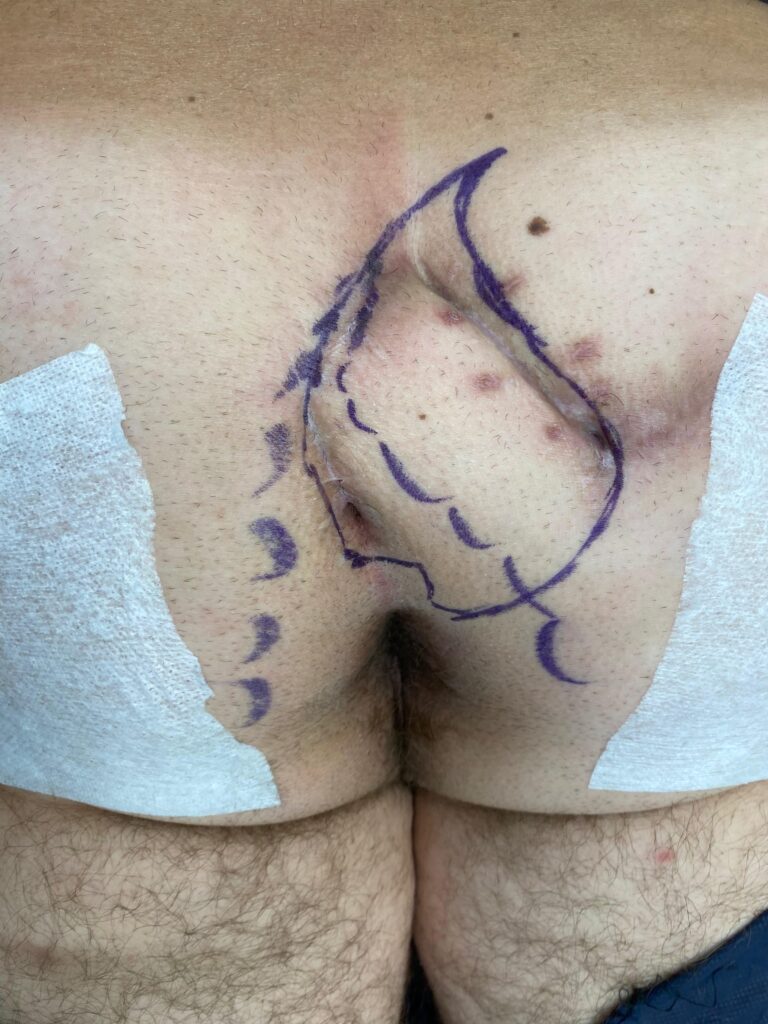
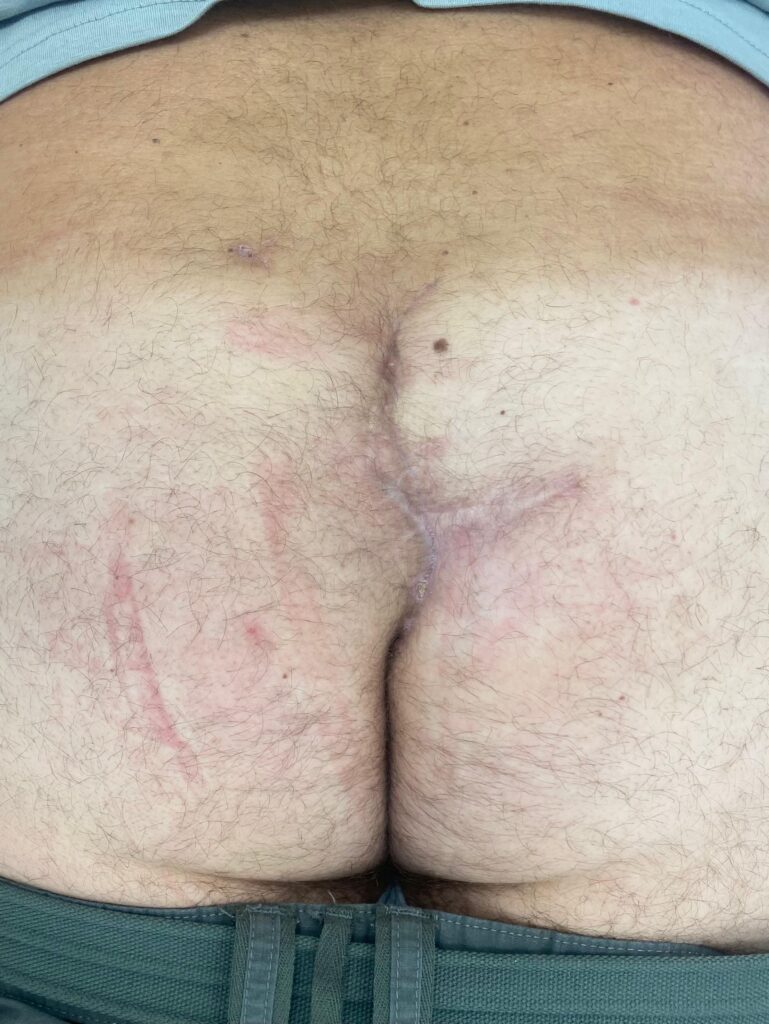
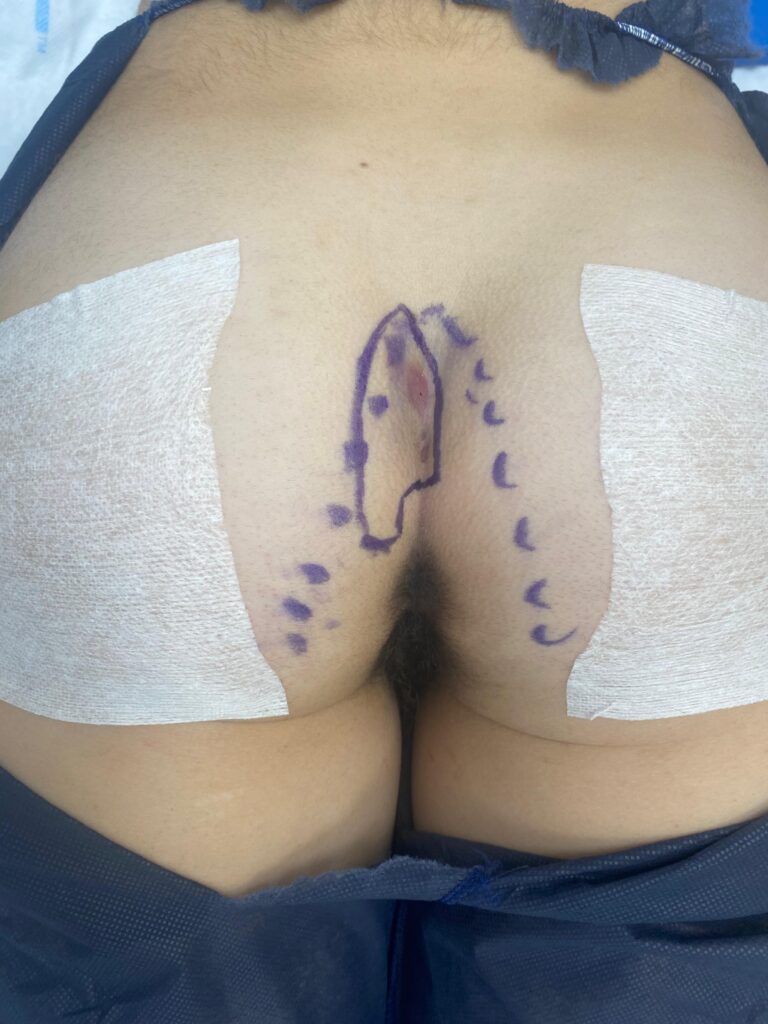
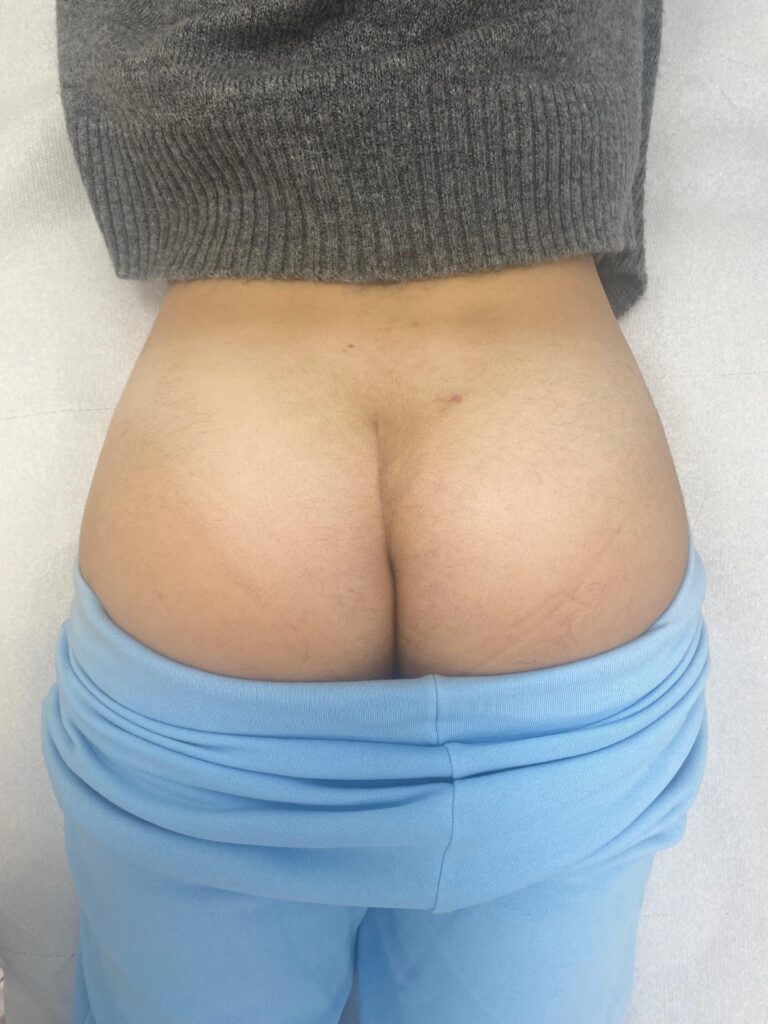
Postsurgical recovery
Despite the drain, the patient may walk and sit immediately after the procedure and 24 hours post surgery and take a shower without the dressing. Wound care is easy, the drain can be removed at home according to postsurgical instructions. The dressing should be changed once daily, Steri-Strips must be left for about 2 weeks and then they can be safely removed. The wound usually heals after up to 2 weeks and does not require dressings after this period. While normal physical activity is possible immediately after the procedure, intense exercise, contact sports, and activities associated with staying under water for long periods of time (bath, swimming pool) can be safely resumed 6 weeks after the procedure. After the surgery, buttocks preserve their natural shape, the postsurgical scar is narrow and is running vertically along the intergluteal cleft, and thus the appearance of the area is still close to natural.
Bascom Cleft Lift efficacy
The Bascom Cleft Lift method and the shallowing of the intergluteal cleft is characterized by high efficacy and lack of recurrence in 98–99% of cases.